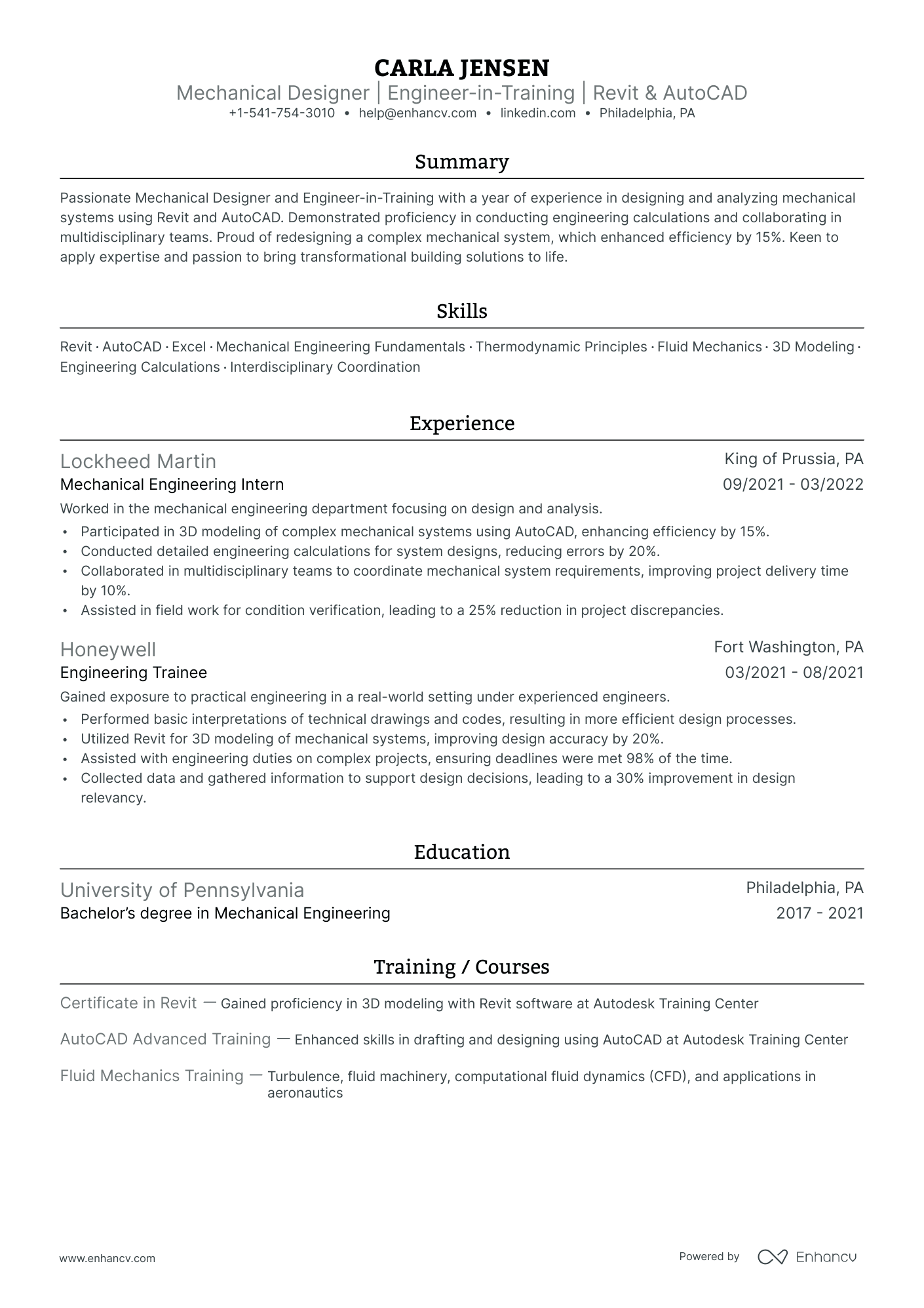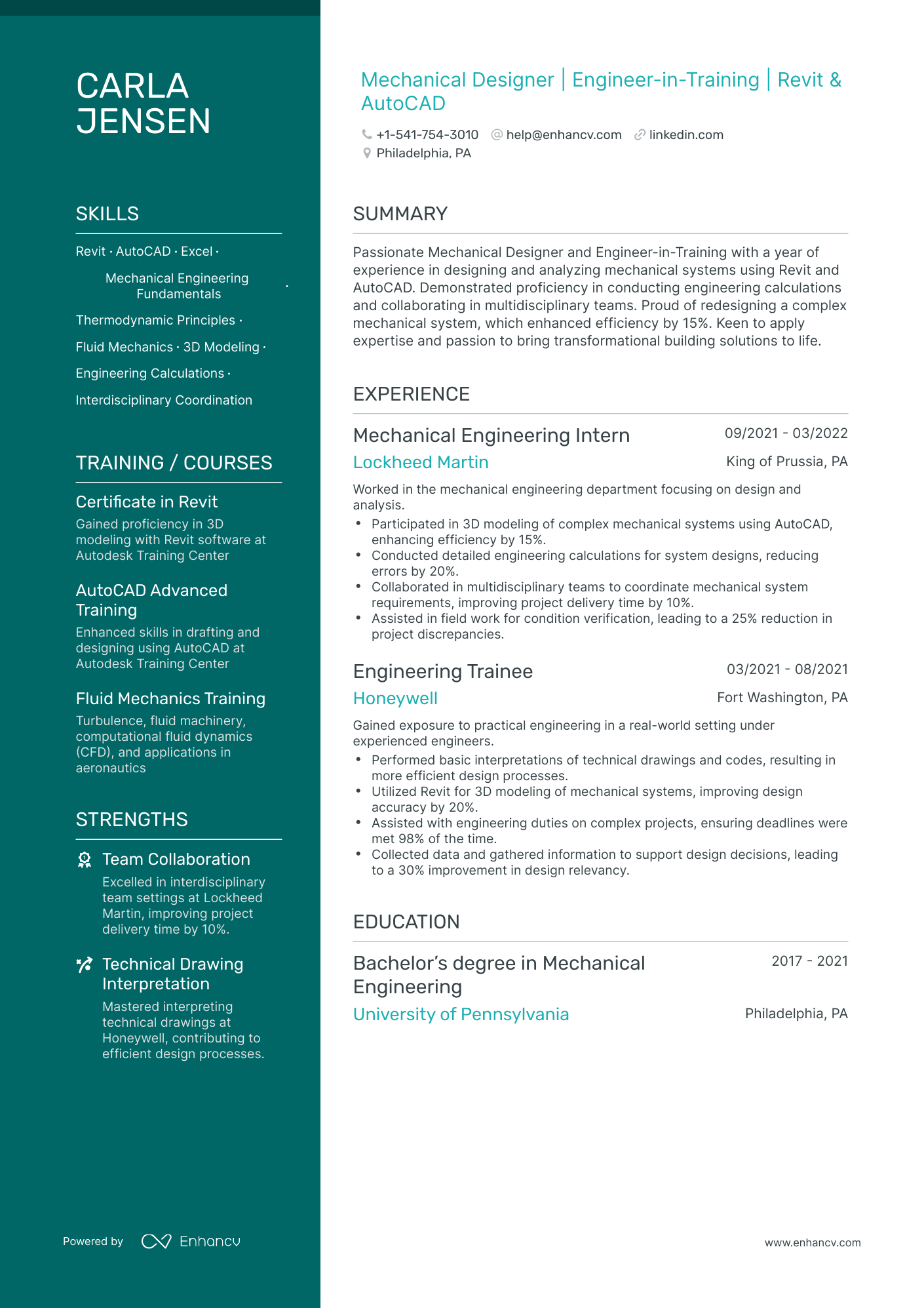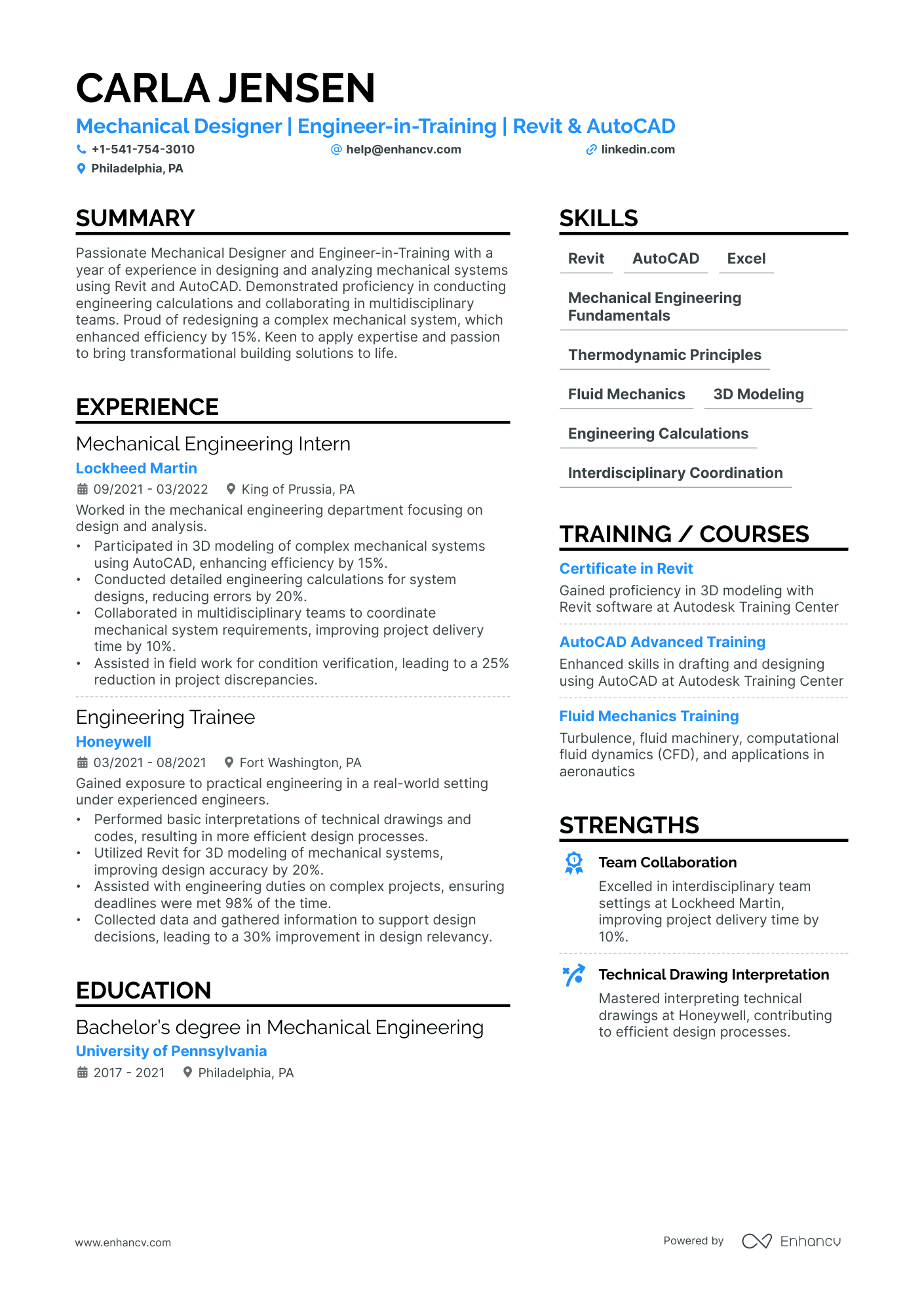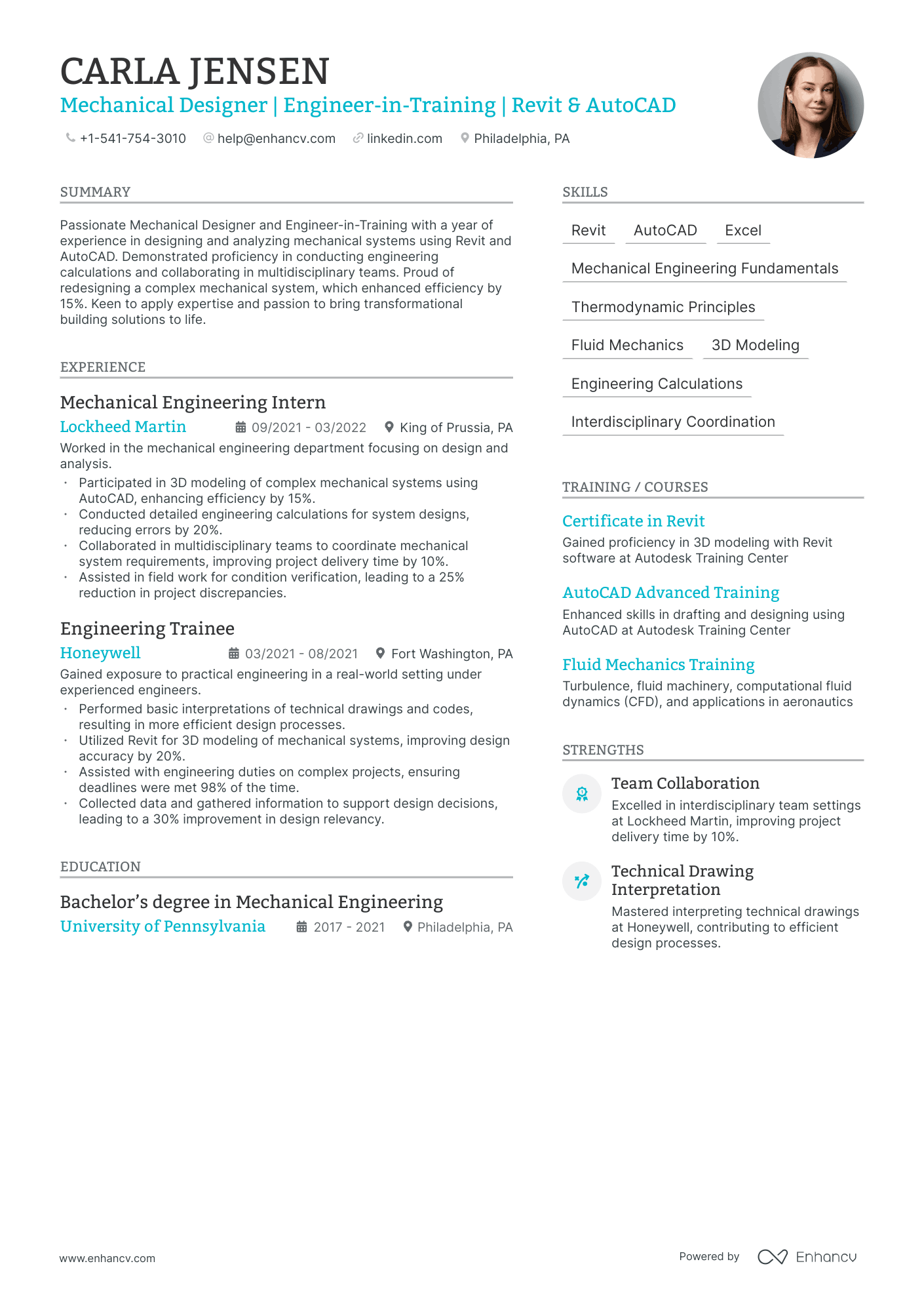Getting an opportunity to be an engineer-in-training is a great way to gain experience.
It’s a win-win situation for both you and the hiring company.
Companies accepting engineers in training are keen to see them grow and succeed.
That explains why they’re supportive and helpful throughout the learning process.
Businesses want to hire Engineers in Training for a variety of reasons.
First, they need human resources to help them complete their basic day-to-day tasks without having to spend much on the process.
Companies are always ready to invest in young talented engineers. They look for engineers to turn into loyal employees in the future.
Also, it makes them look good in the industry and promotes them as leading authorities.
But at the same time, they’re willing to take that risk at a cost.
They want to find the best engineers and give them the chance to thrive.
A recruiter reviewing your resume is looking for someone who can:
- Understand the fundamental engineering principles
- Solve problems and come up with new technical approaches
- Work under the supervision of seniors and contribute to team effectiveness
In this engineer-in-training resume guide, you’ll learn:
- How to structure your engineer-in-training resume in 6 key sections
- Why education matters if you want to get an opportunity as an EIT
- The most important computer, core, and soft skills to have in your resume
- What certifications you should feature to skyrocket your chances of getting hired
Looking for related resumes?
- Engineering Intern Resume
- Entry-Level Engineering Resume
- Entry Level Mechanical Engineer Resume
- Industrial Engineer Resume
How to write an engineer-in-training resume
The recruiter is looking to hire the best engineer-in-training they can find.
But there’s a problem.
They have to deal with hundreds of resumes, and then rationally decide which candidate they should select.
They’re dying to find someone to help them with that.
They’d appreciate it if you could make the hiring decision easy for them.
You're a natural problem solver after all.
It’s a pleasure for them to find someone with an outstanding career and resume that they can hire without thinking twice about it.
That’s why having a strong resume is your way to show why you deserve the job.
But how can you do that?
That’s what we’re going to answer in the rest of this guide.
Hiring managers look for in an EIT someone who
- Is ready to spend 3-4 years learning under the supervision of professional engineers
- Comes with frontloaded knowledge to rely on to learn quickly during the training
- Loves to learn and who’s willing to wear multiple hats and fill up different roles
- Can work in teams and do they fair share of work while respecting deadlines
6 important sections every engineer-in-training resume must have:
- Resume header
- Summary to introduce yourself briefly and leave an impression
- Experience section to highlight yoursignificantexpertise
- Important core and soft skills to feature in your EIT resume
- Resume education
- Certifications
How to write an engineer-in-training resume header
Writing an engineer-in-training resume header is so simple.
All you have to do is fill in some personal details while staying professional.
Yet, it’s the place where lots of beginner mistakes are made.
It's true.
Hiring managers don’t take a final look at the header to make their final decision.
But they do pay close attention to it when it sends them the “I don’t know what I’m doing” signal.
Let’s take a look at an example:
Any recruiter can spot the mistakes in this header without scrutinizing it for too long.
Thankfully, they can be fixed in a few minutes.
- The title is generic and can be improved by adding the career specialty
- There’s no need for the full home address
- The header lacks a link to your LinkedIn profile (in case the recruiter wants to check it)
This is as good as it gets.
Considering how companies hire new employers in today’s age, there’s no need to have more information than what this header has.
An engineer-in-training resume header should include:
- Name
- Phone number
- City, state
- Email Address
- LinkedIn Profile
Writing an attention-grabbing summary for an eit resume
If you want your engineer-in-training resume to be impactful, it has to have a strong summary.
The summary is the best section to introduce yourself and show why you’re the most qualified candidate for the job.
Yet, lots of applicants underestimate the importance of writing a good summary.
So, how do you write a job-winning resume summary?
First, a resume summary always has to be brief and direct.
The hiring manager is interested in knowing more about you, but only to a certain degree.
Write a summary where you tell your life story in dozens of lines and you’ll never get the job of our dreams.
Here are the steps you need to follow to write a great EIT resume summary:
Start with a short sentence about your work and years of experience in the field.
Follow with some information about relevant responsibilities from your previous training
End the summary by shortly talking about your future at the company and how hiring you is beneficial to both you and the company
Optimize your resume summary and objective for ATS
Drop your resume here or choose a file.
PDF & DOCX only. Max 2MB file size.
3 engineer-in-training Samples - Summary
We’ve seen endless examples of resumes where the summary looks something like this:
The problem?
While it may seem like this summary is providing useful information, it isn’t.
It doesn't bring anything new to the table.
Every sentence written in that paragraph can be known by reading other sections.
It doesn’t show your uniqueness or establish you as a qualified candidate.
Also, it doesn’t put into consideration the hiring manager’s perspective.
Of course, you’re great and you should be hired. But why?
All this makes the hiring manager unsure about hiring you.
So, let’s try again.
This provides much more information compared to the first summary.
It highlights your past responsibilities — which helps you stand out.
And it shows that you match what the job application is asking for.
But, there’s still some vagueness that's standing in your way of getting hired.
For example, all candidates applying for this job know how to use at least one computer software.
And they’re all looking for a position with mechanical engineering.
Mentioning this information makes you look average and like others.
A great resume summer uses specific information to speak directly to the recruiter.
This last example is what recruiters love to see when reading resume summaries.
It tells a short story about who the applicant is and why s(he) should be hired.
And it does that without being vague or going into too many unnecessary details.
How to show your engineer-in-training experience in a resume
If you have any engineering experience, this can be a great addition to your resume.
But if you are a recent graduate, you need to take a different approach.
Not including an experience section in your resume is a huge weakness point.
You’ll pass on lots of opportunities despite your talent and willingness to work hard.
So, there has to be some sort of solution to get the recruiter to notice you and be convinced of hiring you.
The solution is straightforward:
Instead of work experience, list your internships, volunteer work, and even personal projects.
2 engineer-in-training experience Samples This may seem good enough at first, but it lacks fundamentals that every EIT resume must have.
It’s generic to any engineering field out there.
And that’s not a positive thing to have in your resume.
For instance, completing engineering tasks assigned by supervisors is a role any EIT could list.
It doesn’t provide the recruiter with the information they’re looking for.
It leaves room for ambiguity and confusion.
There are dozens of engineering software used differently based on the field and industries.
Also, it doesn’t show how your work has influenced the work of others and the company in general.
It’s a list of responsibilities that anyone can list but very few can succeed in.
This summary doesn’t leave room for any uncertainty. It addresses everything the previous summary missed.
It provides detailed information about each responsibility you handled as an intern.
And it features a variety of your core and soft skills to promote you as a qualified engineer.
Most importantly, it shows that you’re able to accomplish tasks and work well with teams under supervision.
All this gives the recruiter all the confidence s(he) needs to hire you and feel good about it.
Pro tip
If you’ve only volunteered or worked as an intern for short periods in the past, remove the dates from your experience.
How to describe the duties of an engineer-in-training in a resume
Your duties as an EIT depend on the field, industries, and the company you’re working for.
So, you need to tailor them to match the new job you want to get.
Here are some examples of responsibilities that EITs handle in general:
- Collaborated with the engineering staff on maintaining and modifying equipment
- Presented prototypes and test procedures to managers and clients
- Applied standard practices to test and evaluate products before launch
- Reported project updates to managers and senior engineers weekly
- Analyzed and interpreted test results and provided technical advice
Do you need an education section as an engineer-in-training?
Having an education section is more than essential for an engineer-in-training resume.
You can’t get hired unless the recruiter knows your educational background.
And it has to meet some standards if you want to get accepted.
There are two requirements that most companies hiring EITs will ask for:
- At least three years of education at an ABET-accredited engineering program
- Passing the six-hours FE (Fundamentals of Engineering) examination
Lots of companies will ask for a Bachelor’s degree in Engineering or Engineering Technology.
So, it would be useful to mention that in your resume.
21 Skills to Feature in Your engineer-in-training Resume Being a successful engineer-in-training is all about being able to perform a wide variety of tasks effectively.
However, that doesn’t mean you should list the strongest skills randomly just to show off.
There are three types of skills that hiring managers often look for in an EIT’s resume.
- Computer skills
- Core skills
- Soft skills
And you need to list different skills from these three categories to make a powerful resume.
Skills change depending on your college education, industry, and what the company is looking for.
For instance, you can feature your essential computer skills such as using AutoCAD, MATLAB, Vulcan, etc.
Core skills include job working experience that's required from engineers across different industries.
Do you have any creative art talents?
Are you able to design or draw products in real life?
Can you manage small teams or projects on your own?
Those are all vital skills that every engineer needs to do his/her job.
Most importantly, you need to have soft skills that’ll allow you to be successful.
Being a good public speaker and communicator are good examples to start with.
8 computer skills to include in your engineer-in-training resume
- AutoCAD
- MATLAB
- Vulcan
- C++
- Microsoft Suite (Office, Excel)
- Computer Modeling
- SOLIDWORKS
- SIMATIC STEP 7
6 core skills to include in your engineer-in-training resume
- Engineering Mechanics
- Technical Writing
- Technical Drawing
- Design
- Languages
- Management Basics
7 soft skills to include in your engineer-in-training resume
- Problem Solving
- Public Speaking
- Communication
- Adaptability
- Teamwork
- Creativity
- Collaboration
Pro tip
When picking skills to feature in your resume, make sure they’ll relevant to the position you’re applying to. The point of listing skills is for you to stand out from the competition. Stay away from repetitive meaningless skills that everyone uses in their resumes. Or else, they’ll backfire and make you look like an average candidate.
The best certifications to include in an engineer-in-training resume
You may have struggled when trying to fill other sections due to lack of experience.
That's a problem all EITs deal with when writing their resumes.
But the bigger problem is not getting hired because the recruiter thinks your a rookie.
How do you overcome that?
It's simple!
List your certificates.
Getting certifications from industry-leading programs will change the way recruiters look at your resume.
Sure, you don’t have senior-level experience as an Engineer.
But that doesn’t mean you won’t thrive in the new job.
Best 5 engineer-in-training certifications to add to your resume
- AutoCAD certification
- Mathworks (MATLAB)
- Solidworks
- ASME Sigma 6 (PM & QC)
- IIT ANSYS
What are the tricks for the best engineer-in-training resume?
- The job description contains the answer to getting hired. Read it carefully before you start making your resume
- Writing an attention-grabbing summary will hammer your resume into the recruiter’s head. Try to improve your resume summary whenever you can
- Featuring the right skills in your engineer-in-training resume will make up for your lack of experience. List your best and most relevant core, soft, and computer skills
- Certifications serve as recommendations from leading engineering programs. Highlight them in your resume and work on getting some if you don’t have any certificates to list




